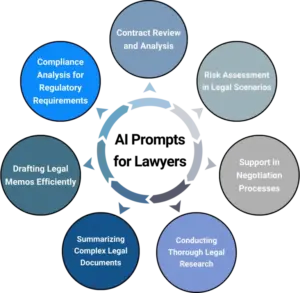Building a strong foundation is crucial for a successful business partnership. A partnership agreement serves as this foundation, detailing the rights, duties, and operational structure of each partner.
In this guide, we’ll discuss the purpose, key components, drafting process, best practices, and common mistakes related to partnership agreements. Whether you’re an experienced entrepreneur or new to partnerships, this guide gives you the essential knowledge to create a solid agreement.
From defining the partnership’s name and goals to handling profit sharing and resolving disputes, we offer practical advice to help you craft a thorough agreement. Let’s explore the complexities of partnership agreements together and lay the groundwork for a prosperous partnership.
What to include in a Partnership Agreement?

A well-drafted partnership agreement should cover several essential elements to protect the interests of all parties involved. These elements include:
- Name and Purpose of the Partnership: Clearly defining the name and purpose of the partnership sets the foundation for its existence. The name identifies the business entity, while the purpose articulates its primary objectives, whether it’s to conduct a specific business activity, provide certain services, or pursue particular goals.
- Contributions of Partners: This section outlines the contributions that each partner will make to the partnership. Contributions can include financial investments, property, equipment, intellectual property, or other assets. Additionally, it may specify the value or nature of non-monetary contributions, such as services or expertise, that partners will provide to the partnership.
- Profit and Loss Distribution: Partnerships distribute profits and losses among partners according to predetermined terms outlined in the agreement. This could be based on the partners’ capital contributions, ownership percentages, or other agreed-upon criteria. The agreement should specify the method and frequency of profit distribution and how losses will be allocated.
- Authority and Decision-Making: Partnerships require decisions to be made on various matters affecting the business. The agreement establishes the authority structure and decision-making process within the partnership. It outlines each partner’s voting rights, the types of decisions requiring unanimous consent or majority vote, and any limitations on individual partner authority.
- Management and Operations: Partnerships often involve shared responsibilities for managing the business. This section delineates the roles and responsibilities of each partner in the day-to-day operations, including areas of expertise, supervisory duties, and decision-making authority. It may also address the appointment of managing partners or the delegation of specific tasks.
- Meetings & Communication: Effective communication and regular meetings are crucial for the success of a partnership. The agreement establishes guidelines for scheduling and conducting meetings, including the frequency, format, and agenda. It also encourages open communication channels among partners to facilitate collaboration and decision-making.
- Dispute Resolution: Disputes between partners can arise from various sources, including disagreements over business decisions, financial matters, or interpersonal conflicts. The agreement includes provisions for resolving disputes through mechanisms such as mediation, arbitration, or other alternative dispute-resolution methods. Clear procedures for addressing conflicts help preserve the partnership’s relationships and prevent disruptions to its operations.
- Withdrawal or Death of a Partner: Partnerships need to address the possibility of a partner’s withdrawal from the business voluntarily or due to unforeseen circumstances such as death or incapacity. The agreement outlines the procedures for a partner’s voluntary withdrawal, including any buyout provisions or restrictions on transferring ownership interests. Additionally, it specifies how a partner’s interests will be handled in the event of their death or incapacity, such as through the buyout by remaining partners or the transfer to heirs.
- Dissolution of the Partnership: Despite best efforts, partnerships may need to be dissolved due to various reasons such as irreconcilable differences among partners, changes in business circumstances, or legal requirements. The agreement defines the circumstances under which the partnership may be dissolved, including procedures for initiating dissolution, winding up business affairs, and distributing remaining assets and liabilities among partners. It may also address any obligations to creditors or third parties upon dissolution.
Related Article: Contract Disputes: A Comprehensive Guide
When should you use a Partnership Agreement?

A Partnership Agreement should be utilized whenever business owners decide to form a business partnership. A business partnership agreement is a crucial legal document that outlines the rights, responsibilities, and obligations of partners in a business venture. Whether it’s a small business startup or a real estate investment, having a comprehensive partnership agreement in place is essential to ensure clarity and mitigate potential legal issues.
Under the Uniform Partnership Act, both general partnerships and limited partnerships should have a partnership agreement, although state laws may vary regarding the default rules in the absence of such an agreement. For general partnerships, where all partners share management responsibilities and unlimited liability, a partnership agreement is particularly important to define each partner’s role, profit-sharing arrangement, and decision-making process.
In the case of limited partnerships, where there are both general partners and limited partners, the partnership agreement helps establish limited liability protection for the limited partners and outlines the management structure and investment terms. Additionally, a partnership agreement is necessary when a partner decides to withdraw from the business, ensuring a smooth transition and fair treatment of the withdrawing partner’s interests.
Furthermore, a partnership agreement is crucial for addressing various business matters such as business profits distribution, the effective date of the agreement, the business name, and the valuation of the business. It also helps establish a basis for resolving disputes, whether through a unanimous vote or other decision-making mechanisms outlined in the agreement.
By state laws, the partnership agreement can include clauses addressing specific legal issues, such as the use of a life insurance policy to protect the business in case of a partner’s death. It can also serve as a template for creating a customized agreement tailored to the unique needs and circumstances of the business partnership.
Ultimately, having a well-drafted partnership agreement is essential for any business structure, including LLCs, as it provides clarity, protection, and a framework for the smooth operation of the business partnership. Whether drafted by the business partners themselves or with the assistance of a law firm, a partnership agreement is a foundational document that helps define the terms of service and govern the business relationship among the partners.
Related Article: Contract Negotiation: Proven Strategies For Collaboration
How to Draft a Partnership Agreement

Drafting a partnership agreement requires careful consideration of the partnership’s unique needs and the individual contributions of each partner. Here’s a step-by-step guide to help you create a comprehensive agreement:
- Identify the Partners: List all the people who are partners in the partnership agreement. Put down their full names and how to contact them. This makes it clear and easy to see who’s part of the partnership.
- Define the Partnership: Explain what the partnership is about in a short and clear way in the partnership agreement. Say what the partnership aims to do, its goals, and what kind of partnership it is. This helps everyone understand what the agreement is for and makes sure all partners agree on the same goals and vision for the partnership.
- Outline Contributions: The agreement should specify the contributions of each partner to the partnership. This includes detailing the capital, assets, or services that each partner will bring to the business venture. Clearly outlining these contributions helps establish fairness and accountability among partners.
- Allocate Profits and Losses: Explain in the agreement how profits will be shared and losses will be handled among partners. Say who gets what share of the profits and who’s responsible for losses. Consider what each partner has put in, their roles, and any other things agreed upon when deciding this.
- Address Decision-Making: In the partnership agreement, make sure to set up how decisions will be made. Say who gets to vote and how important decisions will be made. Having clear rules helps the partnership run smoothly and avoids arguments about who gets to decide things.
- Establish Management and Responsibilities: In the partnership agreement, spell out who does what in running the partnership every day. Say exactly what each partner is responsible for and what they need to take care of. This makes sure everyone knows their role and helps run the business smoothly.
- Include Exit Strategies: In the partnership agreement, make sure to talk about what happens if a partner wants to leave or if a partner passes away. Say how they can leave and what happens to their share of the partnership. Include options like buying out their share, transferring ownership, or other ways they can exit the partnership. This helps keep the partnership stable and running smoothly even if someone leaves.
- Outline Dispute Resolution: In the partnership agreement, it’s important to talk about how to deal with disagreements between partners. Say how you’ll solve problems, like using mediation, arbitration, or other ways everyone agrees on. This helps fix conflicts without making them worse and keeps the partnership working well together.
- Cover Dissolution: In the partnership agreement, describe when the partnership might end and how to finish up everything if it does. Talk about the conditions for ending the partnership and what to do with the money, debts, and other things the partnership has. This helps make sure everything is done properly if the partnership ends.
Related Article: Contract End Date: When Does Your Contract End?
Best Practices for Partnership Agreements

To ensure a successful partnership agreement, it’s essential to follow these best practices:
- Be Clear and Specific: Use precise and clear language in the agreement to avoid misunderstandings. Define key terms to provide clarity to all parties involved.
- Consider Future Scenarios: Think about potential future situations that could affect the partnership, like adding new partners or losing existing ones. Include rules for these scenarios, such as how new partners can join or how to handle a partner leaving.
- Regularly Review & Update: Keep the agreement up-to-date by reviewing it regularly. This helps to reflect changes in the business, the law, or how the partnership works.
- Open Communication: Encourage partners to communicate openly. This builds trust and helps solve problems quickly. Hold regular meetings or use digital tools to keep everyone informed and involved.
- Ensure Fairness: Make sure that the agreement is fair to all partners. Consider each partner’s contributions and responsibilities when deciding how to share profits and make decisions. This ensures that everyone is treated fairly.
Related Article: How To Manage Contracts Efficiently: Best Practices
Common Mistakes to Avoid in Partnership Agreements

Drafting a partnership agreement requires attention to detail, and avoiding common mistakes is crucial to prevent future legal issues. Here are some errors to avoid:
- Incomplete or Vague Terms: Make sure all terms are clearly stated to prevent misunderstandings. Ambiguous language can lead to disagreements or legal problems later on.
- Unequal Contributions: Ensure that each partner’s contributions are fairly recognized for balanced profit sharing. Fairness is key to a successful partnership, so acknowledge and reward contributions appropriately.
- Neglecting Exit Strategies: Plan for the possibility of partners leaving to minimize disruptions. Include provisions for buyouts, ownership transfers, or other exit plans to handle departures smoothly.
- Ignoring Legal Formalities: Ensure the agreement follows local laws and regulations. Failing to comply with legal requirements can invalidate the agreement or expose the partnership to legal risks.
- Overlooking Dispute Resolution: Include a clear process for resolving conflicts to maintain a harmonious partnership. Disputes are inevitable, so having a structured way to address them can prevent conflicts from harming the partnership.
Related Article: Legal Risk Management: A Comprehensive Guide For Businesses
FAQs
1. Can a partnership agreement be verbal?
While verbal agreements may be considered valid in some jurisdictions, it is highly recommended to have a written partnership agreement to avoid potential disputes and ensure clarity on the partnership’s terms.
2. What happens if a partner wants to leave the partnership?
The partnership agreement should outline the procedures for a partner’s voluntary withdrawal, including the buyout or transfer of their interests to remaining partners.
3. Can a partnership agreement be modified after its creation?
Yes, this agreement can be modified if all partners agree to the changes. Any modifications should be documented in writing and signed by all partners.
4. How long does a partnership agreement last?
The duration of a partnership agreement can vary and is typically specified in the agreement itself. Partners may agree to a specific term, or the partnership may continue until dissolved by mutual consent or other specified circumstances.
5. Is a partnership agreement necessary for a two-person partnership?
Yes, this agreement is essential, regardless of the number of partners. It sets the terms of the partnership and protects the interests of both parties.
6. Can a partnership agreement be terminated before its expiration date?
Yes, this agreement can be terminated before its specified end date if all partners agree to dissolve the partnership.
Conclusion
In conclusion, a well-structured partnership agreement is essential for any business involving multiple parties. It defines the rights, responsibilities, and obligations of each partner, ensuring a smooth and cooperative partnership. By following best practices and avoiding common mistakes, you can create a thorough partnership agreement as the basis for a successful business collaboration.
Keep in mind that every partnership is unique, so customize your agreement to fit your venture’s specific needs and objectives. Seek legal advice to ensure your partnership agreement complies with local laws and offers comprehensive protection for all partners. With a carefully crafted partnership agreement in place, you can embark on your business journey with confidence and clarity.





